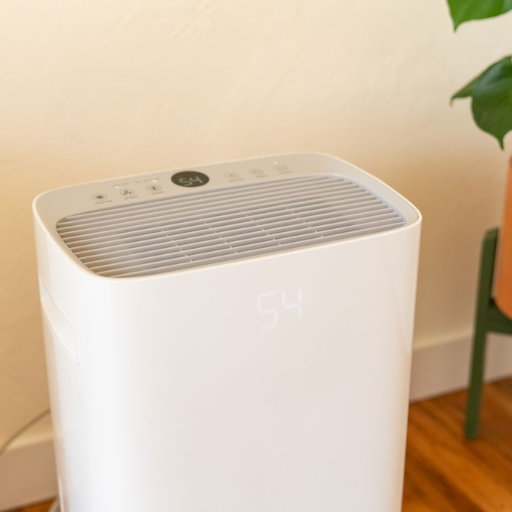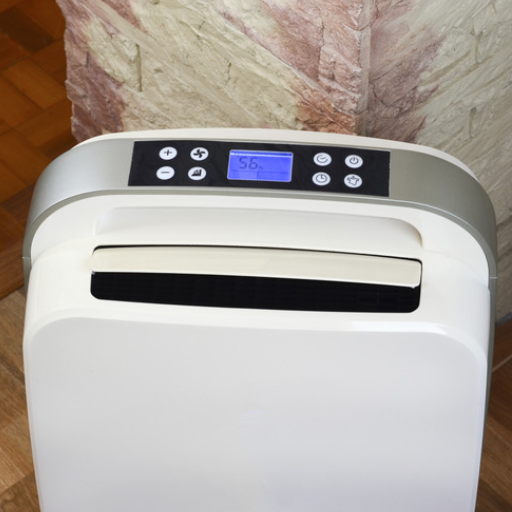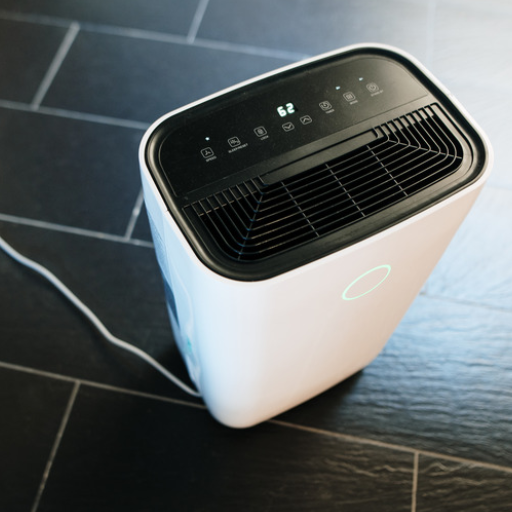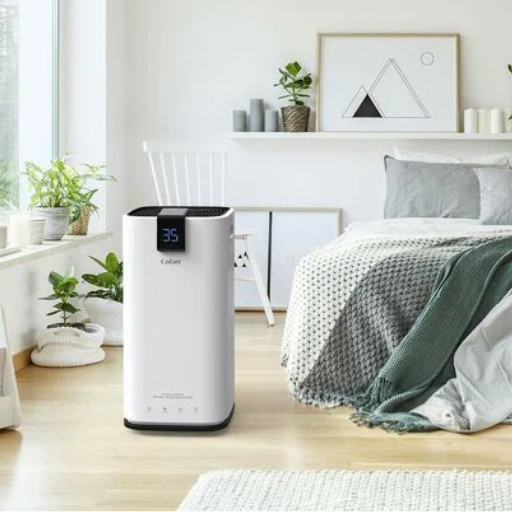Maintaining optimal indoor air quality is essential for creating a healthy, comfortable, and energy-efficient living environment. One of the most effective tools to achieve this is a dehumidifier. By reducing excess moisture in the air, a dehumidifier not only enhances comfort but also provides a wide range of health, structural, and cost-effective benefits. This article explores 12 key advantages of using a dehumidifier, from preventing mold growth and minimizing allergens to improving respiratory health and increasing home longevity. Whether you’re dealing with humidity in specific problem areas or aiming to improve overall air quality, this comprehensive guide will equip you with the knowledge to make informed decisions and transform your space into a sanctuary of clean, breathable air.
What are the main advantages of using a dehumidifier at home?

Prevents Mold and Mildew
Dehumidifiers reduce excess moisture, creating an environment that inhibits the growth of mold and mildew, which can damage your home and pose health risks.
Minimizes Allergens
By reducing humidity, dehumidifiers help limit dust mites, mold spores, and other common allergens, improving indoor air quality for allergy sufferers.
Improves Respiratory Health
Lower humidity levels make it easier to breathe, especially for those with asthma or chronic respiratory issues, by reducing irritants in the air.
Protects Home Structure
Excessive moisture can cause wood to warp, paint to peel, and walls to weaken. A dehumidifier preserves your home’s structural integrity and enhances its longevity.
Enhances Comfort
High humidity can make spaces feel sticky and uncomfortable. A dehumidifier improves comfort by maintaining a balanced and pleasant indoor environment.
Prevents Condensation
Reducing condensation on windows and walls prevents damage and the growth of unhealthy molds around these areas.
Reduces Odors
Damp areas often produce musty smells. Dehumidifiers eliminate these odors by addressing the root cause—moisture.
Promotes Energy Efficiency
By removing excess humidity, dehumidifiers reduce strain on air conditioning units, leading to lower energy consumption and bills.
Having a dehumidifier in your home ensures both your living environment and your health are protected, all while maintaining comfort and efficiency.
How can a dehumidifier improve indoor air quality?
A dehumidifier significantly enhances indoor air quality by balancing humidity levels, which creates a less hospitable environment for allergens like mold, mildew, and dust mites. These allergens thrive in damp conditions, and by reducing excess moisture, a dehumidifier helps to prevent their growth. Additionally, it minimizes musty odors caused by humidity, ensuring fresher and cleaner air. Improved humidity control also reduces the risk of respiratory irritants, allowing for healthier and more comfortable breathing indoors. Using a dehumidifier in conjunction with regular cleaning can create a safer, more breathable living space.
What are the health benefits of using a dehumidifier?
Using a dehumidifier offers numerous health benefits by improving indoor air quality. It helps reduce allergens like dust mites, mold, and mildew, which thrive in high-humidity environments, thereby lowering the risk of allergies and asthma attacks. By maintaining optimal humidity levels, a dehumidifier minimizes respiratory irritants, promoting easier breathing and reducing sinus congestion. Additionally, controlling humidity prevents the growth of bacteria and other harmful microorganisms that can exacerbate health issues, creating a healthier, more comfortable living space for everyone in the household.
How does a dehumidifier help reduce energy costs?
By enabling your air conditioning system to operate more efficiently, a dehumidifier can save energy costs. High humidity increases the temperature felt by an individual and makes air conditioners work harder to cool the space. A dehumidifier mitigates this problem by lowering humidity so that air conditioners can maintain a comfortable temperature with less effort, saving energy. Moreover, removing humidity helps prevent the excessive strain on appliances that face challenging operating conditions, thus increasing appliance lifespan and reducing maintenance costs. That combination of lowered wear on cooling devices, protective functions, and the energy needed for cooling yield significant savings over time.
How does a dehumidifier combat mold and mildew growth?

A dehumidifier combats mold and mildew growth by reducing the indoor humidity levels that these fungi thrive on. Mold and mildew require moisture to grow, and by maintaining humidity below 50%, a dehumidifier creates an environment that inhibits their development. This proactive moisture control not only prevents new growth but also helps protect your home and belongings from damage caused by excess dampness.
Can a dehumidifier prevent mold and mildew formation?
Indeed, a dehumidifier can effectively curb mold and mildew growth by keeping indoor humidity levels below the threshold of approximately 50%. It helps prevent condensation on surfaces, which is a major factor associated with mold growth, by continually extracting moisture from the air. Additionally, employing a dehumidifier in wet locations such as the basement, bathroom, or laundry room greatly reduces the chances of mold spores proliferating and settling. While a dehumidifier cannot singlehandedly remove existing mold, it is useful in inhibiting further development, protecting the home from moisture damage, and eliminating the conditions that encourage mold proliferation.
How does a dehumidifier remove excess moisture from the air?
The appliance functions by removing moisture from the air with the use of a fan. The fan draws in warm and moist air and passes it through the device. The air then comes into contact with cold coils; due to the temperature change, moisture in the air will condense and can either be collected in a reservoir or allowed to be drained out through a hose. The air that is taken back into the unit and is released back into the room goes through a slight reheating process of expelling excess humidity. As a result, warm air is returned to the room, but at a slightly elevated temperature. This cycle repeat continuously, removing any mildew, mold, or dampness that is of concern in an environment with an ideal humid level.
What humidity levels should I aim for to prevent mold growth?
Experts recommend maintaining indoor humidity levels between 30% and 50% to prevent mold growth effectively. Mold thrives when humidity exceeds 60%, so keeping levels below this threshold is essential. During warmer months, aim for 40%-50% humidity, while in cooler months, it may drop closer to 30%-40% to prevent condensation on windows. Using a hygrometer to monitor indoor humidity levels and employing dehumidifiers or ventilation as needed can help maintain this ideal range. Regular monitoring and adjustments are key to creating a mold-free environment.
Can a dehumidifier alleviate allergy and asthma symptoms?

Yes, a dehumidifier can help alleviate allergy and asthma symptoms by reducing excess moisture in the air, which limits the growth of mold, dust mites, and mildew—common allergens and asthma triggers. By maintaining indoor humidity within the recommended range of 30%-50%, a dehumidifier creates an environment that is less hospitable to these irritants, improving air quality and providing relief for individuals with respiratory sensitivities. However, it is important to use the device properly and alongside other cleaning and ventilation measures for optimal results.
How does a dehumidifier reduce dust mite populations?
A dehumidifier reduces dust mite populations by lowering the humidity levels in your home. Dust mites thrive in environments with humidity levels above 50%, as they require moisture in the air to survive and reproduce. By maintaining indoor humidity between 30%-50%, a dehumidifier creates conditions that are unfavorable for dust mites, effectively limiting their growth and activity. This reduction in dust mites can alleviate allergy symptoms and improve overall air quality when combined with regular cleaning practices.
What impact does a dehumidifier have on respiratory health?
A dehumidifier can significantly improve respiratory health by reducing excess moisture in the air, which helps prevent the growth of mold, mildew, and dust mites—all common triggers for allergies and asthma. By maintaining optimal indoor humidity levels, typically between 30%-50%, a dehumidifier minimizes airborne allergens and irritants that can exacerbate respiratory conditions. It also creates a more comfortable breathing environment, particularly for individuals with chronic respiratory issues, by improving overall air quality and reducing musty odors caused by dampness.
Can a dehumidifier help with pollen allergies?
Yes, a dehumidifier can help with pollen allergies indirectly. While it does not remove pollen from the air directly, maintaining optimal humidity levels reduces the growth of mold and damp conditions where pollen and other allergens can thrive inside your home. Additionally, lower humidity can prevent the stickiness in the air that might allow allergens to cling to surfaces more easily. For a more comprehensive approach to managing pollen allergies, combining a dehumidifier with an air purifier and regular cleaning can significantly improve indoor air quality and alleviate allergic reactions.
How does a dehumidifier protect your home and belongings?

A dehumidifier protects your home and belongings by reducing excess moisture in the air, which helps prevent mold, mildew, and rust from forming. This not only safeguards walls, furniture, and flooring but also preserves items like electronics, books, and clothing from damage caused by humidity. By maintaining optimal indoor humidity levels, a dehumidifier creates a safer and healthier living environment while extending the life of your possessions.
Can a dehumidifier prevent condensation on windows?
The application of a dehumidifier does reduce the moisture on windows by managing the humidity level in the house. During winter, the cold surfaces of windows tend to retain moisture. Dehumidifiers do seem to take care of most of these issues by controlling room humidity and reducing condensation. Still, proper ventilation and the elimination of water supplies such as indoor drying require attention to fully resolve window condensation problems. With the addition of all these measures, a dehumidifier works best for achieving a more permanent solution.
How does a dehumidifier protect furniture and electronics?
Dehumidifiers protect furniture and electronics by reducing excess moisture in the air, which can otherwise lead to damage over time. High humidity can cause wooden furniture to swell, warp, or develop mold, while excessive moisture can lead to rust and corrosion in electronic devices, potentially compromising their functionality. By maintaining an optimal humidity level, typically between 30% and 50%, dehumidifiers create a stable environment that prolongs the lifespan of these items and prevents costly damage.
Will a dehumidifier help eliminate musty odors in the house?
Yes, a dehumidifier can help eliminate musty odors in the house. Musty smells are often caused by excess moisture, which promotes mold and mildew growth. By reducing humidity levels, a dehumidifier limits the conditions that allow mold and mildew to thrive, effectively targeting the source of the odor. While it won’t remove odors immediately, consistent use can significantly improve indoor air quality over time. For best results, pair your dehumidifier with regular cleaning and proper ventilation to address all potential odor sources.
What are the benefits of using a dehumidifier in specific areas of your home?

Basements: Basements are prone to dampness and poor air circulation, making them ideal breeding grounds for mold. A dehumidifier helps reduce moisture, preventing mold growth and protecting stored items from damage.
Bathrooms: Bathrooms often have high humidity levels due to showers and baths. Using a dehumidifier keeps the air dry and reduces the likelihood of mold, mildew, and water-related damage to walls and ceilings.
Kitchens: Cooking and dishwashing generate steam, increasing humidity. A dehumidifier helps to control excess moisture, preventing condensation and improving air quality.
Bedrooms: High humidity in bedrooms can disrupt sleep and aggravate allergies. A dehumidifier creates a more comfortable and healthier sleeping environment.
Laundry Rooms: Drying clothes indoors emits moisture, making laundry rooms particularly humid. A dehumidifier can quickly eliminate excess moisture, protecting walls and preventing musty odors.
Using a dehumidifier in these areas ensures greater comfort, property protection, and overall indoor air quality improvement.
Why should you use a dehumidifier in the basement?
Using a dehumidifier in the basement is essential due to the high humidity levels often found in this part of the home. Basements are prone to excessive moisture because they are partially or fully below ground level, making them susceptible to dampness. High humidity can lead to mold growth, mildew, and unpleasant odors, all of which can negatively impact health and damage stored items or the structural integrity of the space. A dehumidifier helps to regulate humidity, creating a dry and comfortable environment while preventing moisture-related issues. Additionally, reducing humidity in the basement can also improve overall air quality throughout the home, as air circulates from the lower levels upwards.
How can a dehumidifier improve comfort in bedrooms?
A dehumidifier can greatly enhance comfort in bedrooms by maintaining optimal humidity levels, reducing excess moisture that can create a damp and uncomfortable environment. It helps prevent the growth of allergens like dust mites and mold, which thrive in humid conditions and can disrupt sleep or trigger allergies. By keeping the air drier, a dehumidifier also helps regulate temperature, making the room feel cooler and more pleasant, especially during humid seasons. Additionally, it contributes to better air quality by minimizing musty odors, ensuring a fresher and healthier sleeping space.
What are the advantages of using a dehumidifier in the laundry room?
Using a dehumidifier in the laundry room offers several advantages. It speeds up the drying process for clothes by reducing excess moisture in the air, even when drying clothes indoors or during humid weather. This helps prevent the buildup of mold and mildew on walls, floors, and fabrics, maintaining a cleaner and healthier environment. Additionally, it minimizes musty odors commonly associated with damp laundry rooms, improving overall air quality. A dehumidifier also protects household items and appliances in the laundry room from moisture-related damage, extending their lifespan and functionality.
How does a whole-house dehumidifier differ from portable units?

A whole-house dehumidifier is designed to manage the humidity levels across your entire home, whereas portable units are limited to controlling moisture in a single room or specific area. Whole-house dehumidifiers are typically integrated into your home’s HVAC system, allowing for seamless, automatic operation and consistent results throughout the house. They tend to be more energy-efficient for large-scale dehumidification but require professional installation and a higher upfront cost. On the other hand, portable dehumidifiers are more affordable, easy to move, and ideal for targeting problem areas, although they require regular maintenance such as emptying water tanks and may not offer the same level of efficiency or coverage as whole-house systems.
What are the benefits of installing a whole-house dehumidifier?
Installing a whole-house dehumidifier offers several key advantages for maintaining a healthy, comfortable, and efficient home environment. First, it helps regulate humidity levels consistently throughout the home, reducing the risk of mold, mildew, and dust mites, which thrive in damp conditions. Second, it can improve indoor air quality and reduce allergy triggers, making it particularly beneficial for individuals with respiratory conditions or sensitivities. Third, by maintaining optimal humidity levels, a whole-house dehumidifier can protect your home’s structure, furniture, and electronics from moisture damage. Additionally, it can enhance HVAC performance by alleviating excess moisture, allowing your system to cool your home more effectively and efficiently, which may result in lower energy costs. All these benefits make it a practical long-term solution for creating a healthier and more comfortable living space.
How does a whole-house dehumidifier work with your HVAC system?
A whole-house dehumidifier integrates seamlessly with your HVAC system to regulate humidity levels throughout your home. Installed within your HVAC unit’s ductwork, it draws in air from your home, removing excess moisture as it passes through the system. The dehumidifier typically uses cooling coils to condense the moisture into water, which is then drained away, leaving the air drier and more comfortable. Once dehumidified, the air is recirculated back into your home via the HVAC system. By reducing humidity, the dehumidifier minimizes the strain on your air conditioner, allowing it to perform cooling tasks more efficiently and maintain a consistent indoor climate while preventing problems like mold growth or moisture-related damage.
When should you consider using a dehumidifier in your home?

If you see mold and mildew, smell musty odors, or notice dampness within your home, purchasing a dehumidifier may be helpful. Dehumidifiers work for basements and other areas that are damp but do not have much air circulation. Concentrated moisture leads to damage of furniture and walls, discomfort for the person, and worsens preexisting health conditions such as arthritis or asthma. Dehumidifiers are particularly useful in warm and humid seasons in places with high moisture.
What are the signs that you need a dehumidifier?
A dehumidifier may be warranted in your home for many different reasons. One indicator that stands out is a persistent damp odor in basements or bathrooms. You may also notice mold or mildew forming on walls, ceilings, or other surfaces. High humidity often results in condensation on windows, as well as water stains on the walls and ceilings of a room. Moreover, feeling clammy skin along with worsened allergy or asthma symptoms, respiratory irritation, or physical discomfort of any kind suggests that there is too much moisture in the air. Peeling paint, warped wood, or cracked wallpaper could also be reason for concern if they are contained within your house and may signal chronic humidity related problems that a dehumidifier could solve.
How do seasonal changes affect the need for a dehumidifier?
Seasonal changes significantly influence the need for a dehumidifier, as varying weather conditions impact indoor humidity levels. During warmer months, especially in summer, the air tends to hold more moisture, leading to elevated humidity levels indoors. This is particularly noticeable in regions with high temperatures and rainfall, where homes can become breeding grounds for mold, mildew, and dust mites. Conversely, in winter, colder air holds less moisture, and heating systems can create dry indoor conditions. However, specific areas like basements may still retain higher humidity during this season due to trapped moisture or poor ventilation. Using a dehumidifier during humid seasons or in damp-prone spaces throughout the year can help maintain optimal indoor air quality and protect your home from moisture-related issues.
Can a dehumidifier complement your air conditioning system?
Certainly, pairing a dehumidifier with an air conditioning system can enhance comfort and reduce energy expenditure. Dehumidifiers remove excess moisture as a result of humidity, and air conditioners cool air, though they don’t sufficiently reduce moisture in the air during high humidity periods. Combining the air conditioner with a dehumidifier allows the system to function optimally so the air does not feel damp. In addition, lowering the humidity level allows the air conditioning unit to perform more efficiently which, in turn, reduces overall energy consumption and increases the unit’s lifespan. Together, these appliances become beneficial in creating a controlled living environment by reducing the risks of mold and high humidity allergens that may lead to skin or respiratory complications.
References
Frequently Asked Questions (FAQ)
Q: What are the key benefits of using a dehumidifier in your home?
A: The key benefits of a dehumidifier include reducing moisture levels, preventing mold growth, and improving overall air quality. A dehumidifier can also make the air feel cooler and more comfortable.
Q: How does a dehumidifier work compared to a humidifier?
A: A dehumidifier reduces the water vapor in the air by extracting moisture, while a humidifier adds moisture to the air. The use of a dehumidifier is recommended in high humidity environments, whereas a humidifier is beneficial in dry conditions.
Q: What are some common dehumidifier uses in a household?
A: Common dehumidifier uses include reducing humidity in basements, preventing mold in bathrooms, and maintaining comfortable moisture levels in living spaces and bedrooms.
Q: How can a whole house dehumidifier improve indoor air quality?
A: A whole house dehumidifier can help reduce excess moisture throughout the entire home, leading to consistent air quality, reduced allergens, and prevention of mold and mildew growth.
Q: What are the established health benefits of using a dehumidifier?
A: The health benefits of a dehumidifier include reducing allergy symptoms, minimizing respiratory issues, and preventing mold-related health problems by controlling humidity in your home.
Q: How does a home dehumidifier contribute to energy efficiency?
A: A home dehumidifier can make your home feel cooler, allowing you to rely less on air conditioning, which can lead to energy savings. Additionally, maintaining proper humidity levels can improve the efficiency of heating and air systems.
Q: What should I consider before dehumidifier installation?
A: Before installing a dehumidifier, consider the size of the area, the current humidity level, and the type of dehumidifier that best suits your needs, such as a portable unit or a whole house system.
Q: How often should I run a dehumidifier to maintain optimal air quality?
A: It’s generally recommended to run a dehumidifier for several hours daily, especially during humid months, to maintain optimal air quality and keep moisture levels in check.
Q: Can a dehumidifier help with dry air issues?
A: While a dehumidifier is designed to remove excess moisture, using it in combination with a humidifier during dry conditions can balance the moisture level, preventing overly dry air in your home.



